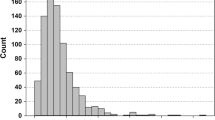Abstract
We estimated total lead shotshell pellets expended, resultant pellet availability near soil surface, and the frequency of pellet ingestion by northern bobwhites (Colinus virginianus) attributable to nearly a quarter century of bobwhite hunting on a 202-ha upland habitat at Tall Timbers Research Station, Leon County, Florida. A total of 7,776 shots were fired, resulting in the expenditure of approximately 4.5 million pellets (∼ 22,519/ha). Sixteen of 235 (6.8%) soil samples collected in 1989 and 1992 contained one or two pellets. Soil samples indicated that approximately 7,800 pellets/ha (about 35% of the projected 24-year deposition) were within 2.54 cm of the soil surface. Pellet ingestion by bobwhites was evaluated by examining 241 gizzards collected from 1989–92. Three bobwhites (1.3%) had ingested pellets (x¯ = 1.3 pellets). No instances of suspected lead poisoning were noted in bobwhites over the 24-year period. Sport hunting of wild bobwhite populations on upland habitats appears to produce a low potential for lead poisoning compared to lead deposition in association with waterfowl and dove hunting.
Similar content being viewed by others
Author information
Authors and Affiliations
Additional information
Received: 15 October 2001/Accepted: 6 March 2002
Rights and permissions
About this article
Cite this article
Keel, M., Davidson, W., Doster, G. et al. Northern Bobwhite and Lead Shot Deposition in an Upland Habitat. Arch. Environ. Contam. Toxicol. 43, 0318–0322 (2002). https://doi.org/10.1007/s00244-002-1212-5
Issue Date:
DOI: https://doi.org/10.1007/s00244-002-1212-5




